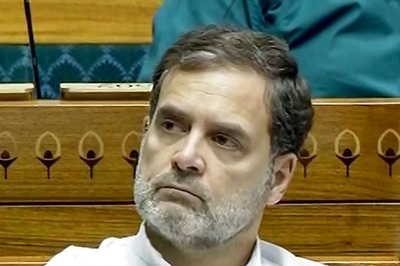
views
HAVANA: Cash-strapped Cuba is opening more foreign currency outlets selling food, personal hygiene products, electrical appliances and other items in short supply, irritating locals who are paid in pesos.
Battered by U.S. sanctions, the pandemic and an unwieldy state-dominated economy, Communist authorities say it is a temporary measure as the peso is worthless abroad and it has no tradable currency to import the goods.
The stores are exacerbating the divide between haves and have-nots that emerged after the fall of the island’s former benefactor, the Soviet Union.
Those with access to dollars and other foreign currencies through remittances, tourism and some non-state activities are forging ahead economically.
“This is a situation that life has forced on us to keep a certain level of supply in the market,” Economy Minister Alejandro Gil said during a television appearance.
“It is transitory and our future is … that all transactions in the country are in Cuban pesos,” he added.
That provided no solace for Manuel Torres, who works for a state bakery that sells rationed, subsidized bread in Havana.
“With 315 Cuban pesos a month, which is three dollars, what are you going to buy?” he asked, angrily waving a fistful of pesos in the air.
The country purchases more than 60% of the food it consumes abroad along with the parts and ingredients for almost everything else it produces.
Analysts expect the economy to decline around 8% this year after stagnating in 2019, and foreign trade to slump 30%.
Long queues are common as residents seek basic goods, including at the dollar shops.
The shops first emerged in Cuba in 1994, were switched to a local convertible peso pegged at 24 pesos to the dollar in 2004, and then began to appear again last year.
Experts estimate some 40% of the population of 11.2 million receives remittances from overseas, while the pandemic has shuttered tourism and many private businesses linked to the sector.
The state is short of dollars to exchange for pesos, driving up the informal rate to 50 pesos or more to the dollar.
The government also has few dollars to trade for the convertible peso, which is expected to be eliminated by the end of the year. They are now trading for as much as two to the dollar on the informal market, twice as much as in 2019.
David Pereira, who was at a local bank opening a dollar debit card account, said he needed to buy personal hygiene products which were only being sold in tradeable money but he did not have enough.
“How do I get it? That is my question and no one can answer it. How do I obtain that product that is in a currency to which I do not have access?”
Disclaimer: This post has been auto-published from an agency feed without any modifications to the text and has not been reviewed by an editor
Read all the Latest News, Breaking News and Coronavirus News here


















Comments
0 comment